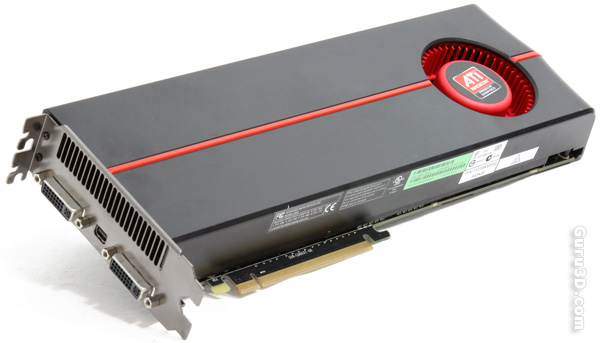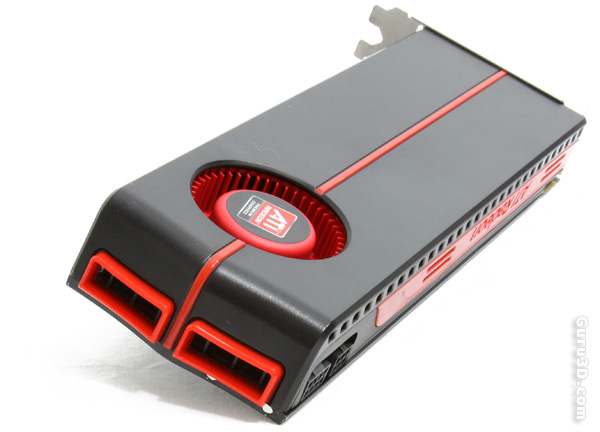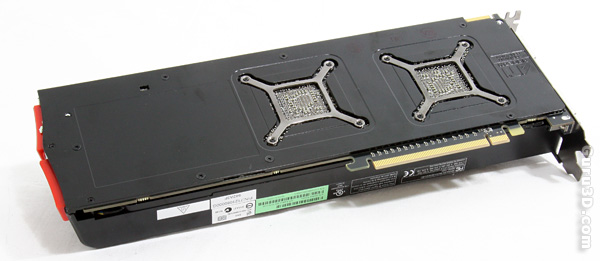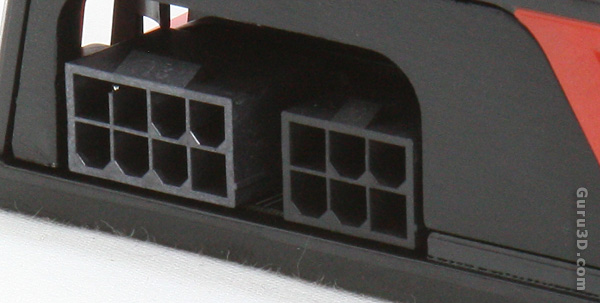Product Gallery - Reference Radeon HD 5970
Product Gallery - Reference Radeon HD 5970
We have two Radeon HD 5970 graphics cards in our lab right now. First let's have a look at the reference model from ATI and then the product we'll be reviewing today, the Radeon HD 5970 Limited Edition from HIS.

And there it is -- the reference Radeon HD 5970. Armed with two partitions of 1 GB GDDR5 memory clocked at 4000 MHz. The two GPU cores come with a 725 MHz core clock -- but with a little extra juice (Voltage) you'll easily take them towards 900 MHz. In fact we'll show you that later on.

If you like to be a proud Radeon HD 5970 owner, we definitely like to hint you to an ATX full-tower with enough clearance for this card. The card is very long at 30CM / 12 in.

The overall design is sleek and resembles the other series 5000 cards really well. At the rear side of that rounded curve on the card we see two air intakes. The card is designed in such a manner that it will take in air from inside your PC and exhaust the heated air outside the PC. As always we recommend you to have a well ventilated PC with at least a 120mm fan for intake and exhaust. Create some airflow you guys, really important -- especially with high-end components.

When we flip the card around we see a nice backplate installed. I'm a big fan of this. there is much less risk of damage this way. The downside -- it could trap heat. However, heat as we'll show you is not really an issue with this product. Clearly visible is the location of the two GPUs.

With a TPD of 294W there's no need for dual 8-pin PEG power headers. 75 Watt is supplied though the PCie bus, the 6-pin PEG delivers another 75W and then the 8-pin connector delivers 150W. The grand total then is 300W (and a little extra).
But enough about the reference product, let's have a look at a retail sample.
